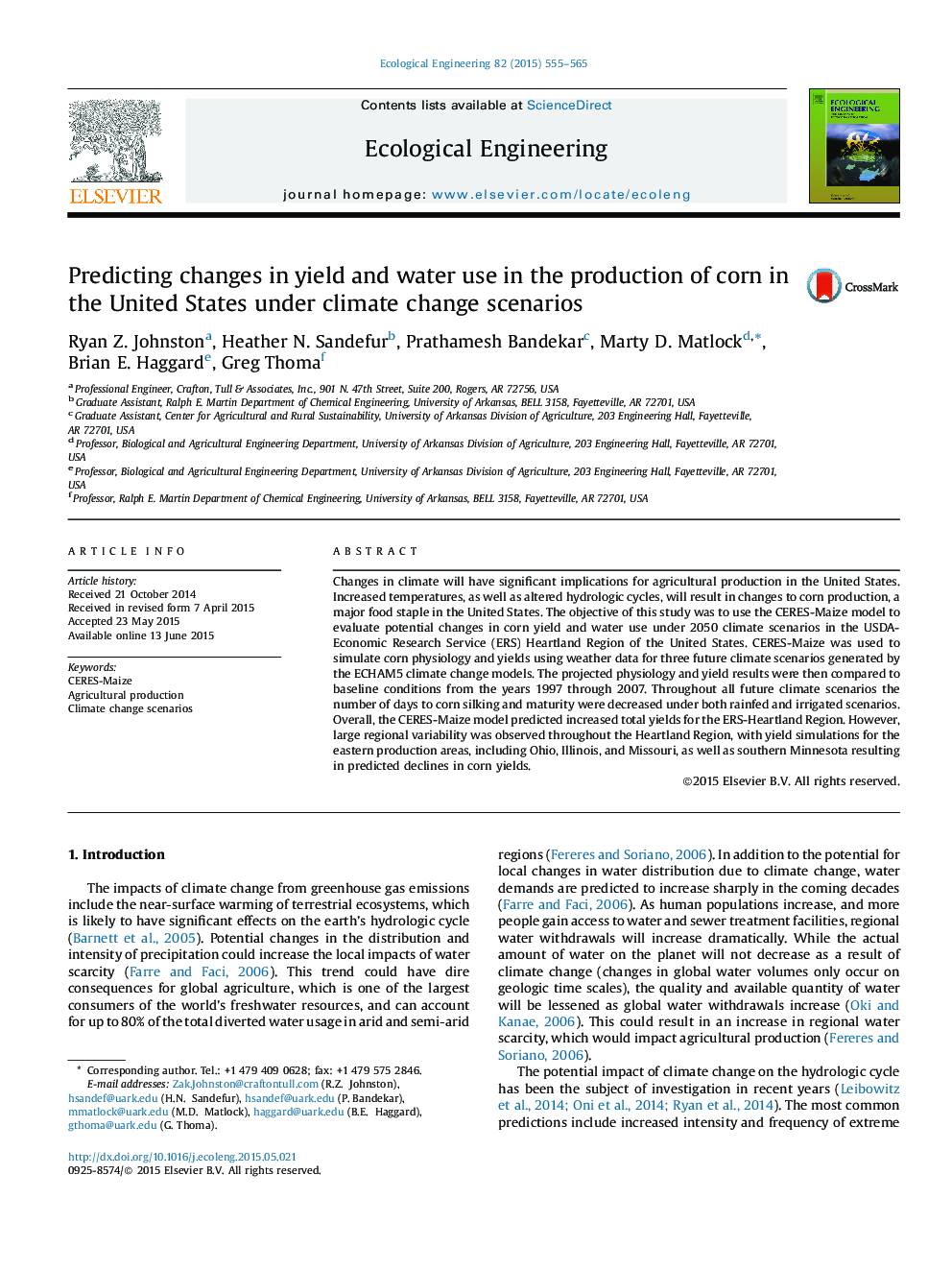| Article ID | Journal | Published Year | Pages | File Type |
|---|---|---|---|---|
| 4389007 | Ecological Engineering | 2015 | 11 Pages |
Changes in climate will have significant implications for agricultural production in the United States. Increased temperatures, as well as altered hydrologic cycles, will result in changes to corn production, a major food staple in the United States. The objective of this study was to use the CERES-Maize model to evaluate potential changes in corn yield and water use under 2050 climate scenarios in the USDA-Economic Research Service (ERS) Heartland Region of the United States. CERES-Maize was used to simulate corn physiology and yields using weather data for three future climate scenarios generated by the ECHAM5 climate change models. The projected physiology and yield results were then compared to baseline conditions from the years 1997 through 2007. Throughout all future climate scenarios the number of days to corn silking and maturity were decreased under both rainfed and irrigated scenarios. Overall, the CERES-Maize model predicted increased total yields for the ERS-Heartland Region. However, large regional variability was observed throughout the Heartland Region, with yield simulations for the eastern production areas, including Ohio, Illinois, and Missouri, as well as southern Minnesota resulting in predicted declines in corn yields.
